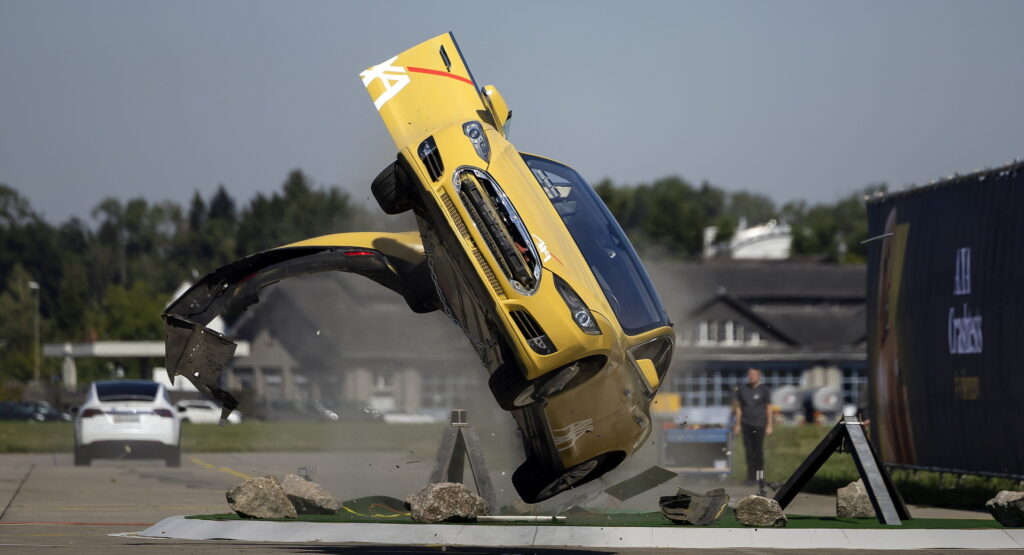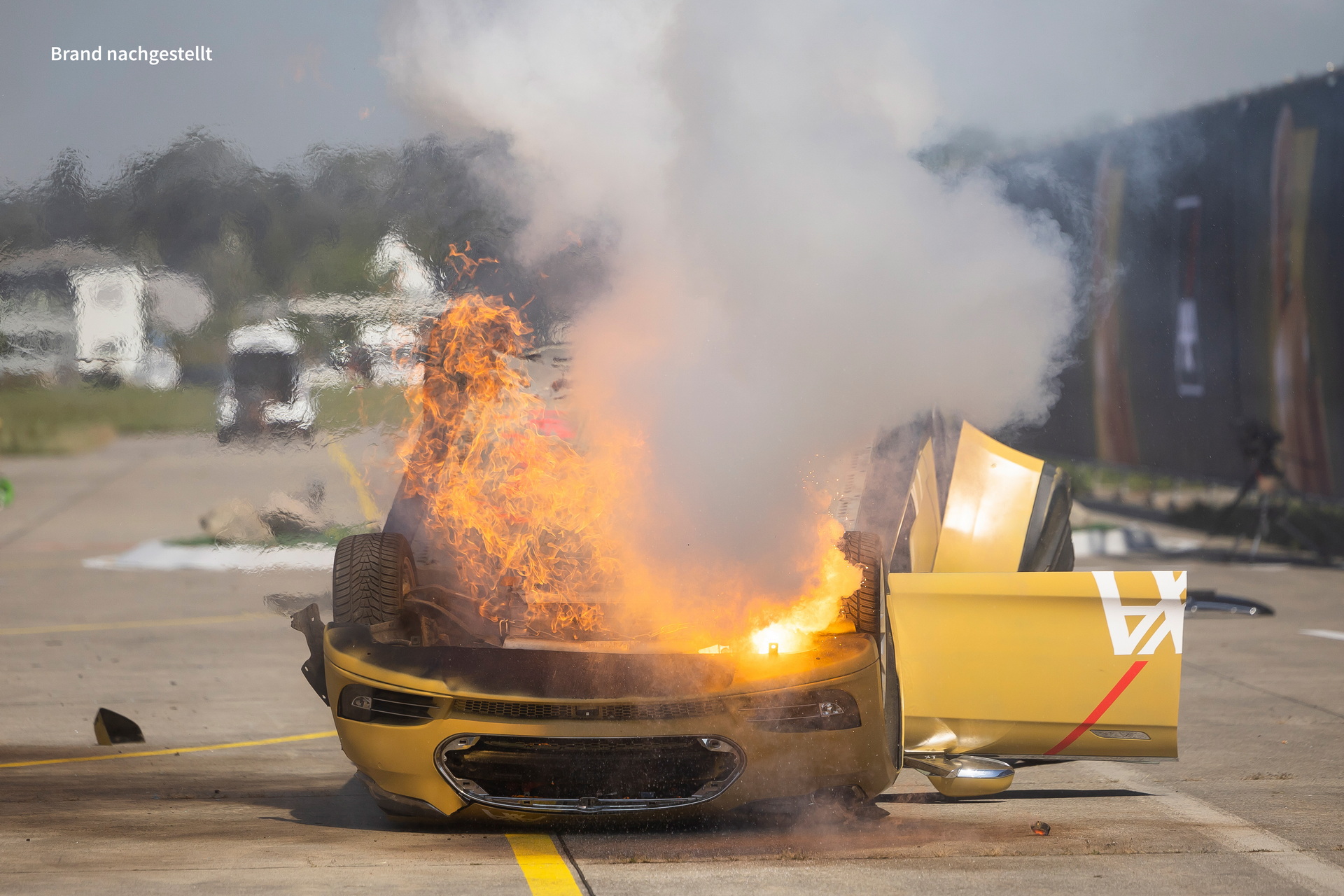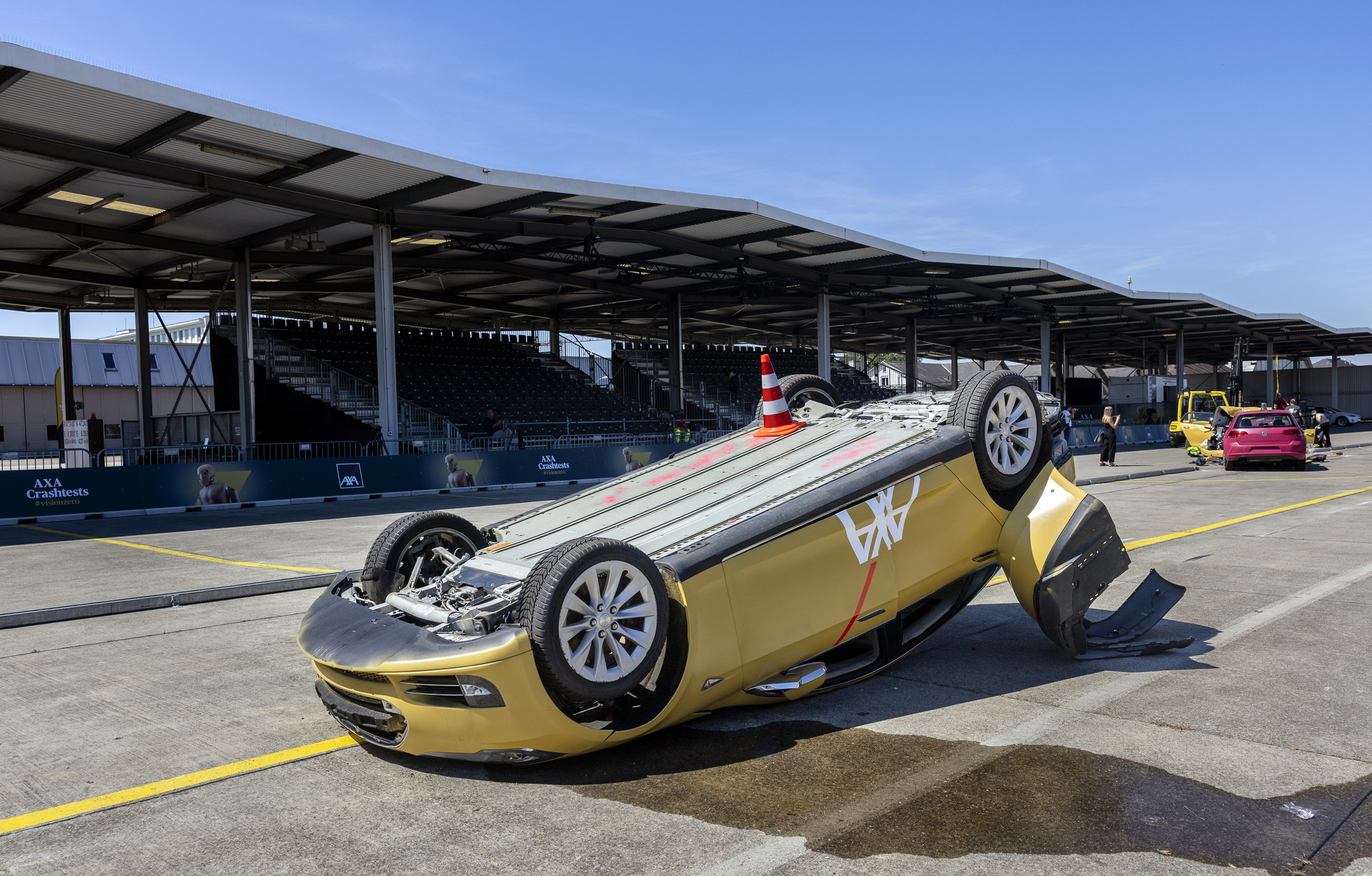French insurer AXA has been looking into the peculiarities of accidents involving electric vehicles following its 2022 crash tests in Zurich, Switzerland. The company found in its testing that accidents involving the new vehicles are more expensive, more dangerous to occupants of other vehicles, and that EVs have an Achilles’ heel.
“We insurers and our customers also have to manage new risks: Although e-cars do not cause more accidents in this country, they can often lead to more expensive individual claims,” said Nils Reich, director of property insurance at AXA in Germany.
The reasoning behind the claims being more expensive is simple: EVs are filled with expensive technology that, if damaged, can be expensive to fix. Moreover, although EVs, by and large, feature the latest safety technology for the cabin, there is an inevitable weakness in their design.
Read Also: Watch Nissan Crash Test The Electric Ariya And Scrutinize 1/1000th Of A Second
With the majority of automakers placing batteries at the bottom of their vehicles, damage from underneath can lead to surprisingly expensive and sometimes dangerous damage. The insurer notes, though, that the risk of fires in both EVs and combustion vehicles is overstated. Statistically, it found that just five of every 10,000 vehicles fall victim to fire.
There is one area in which EVs are likelier to cause accidents, and that’s under acceleration. The high, instant torque of electric motors is leading to circumstances in which EV drivers stab the throttle then lift off, sometimes leading to a loss of control and a crash.
“Most electric cars, especially the powerful ones, have a very high torque, which is immediately noticeable when you tap the power pedal,” said Michael Pfaffli, head of accident research at AXA Switzerland. “This can result in unwanted, jerky acceleration that the driver can no longer control.”
What AXA refers to as “overtapping” is leading to 50 percent higher rates of accidents in which drivers damage their own vehicles, as compared to vehicles powered by combustion engines. And that is working in concert with another aspect of EVs to lead to bigger crashes.
Since electric vehicles simply weigh more than their combustion counterparts, they generate more force in an accident. Two cars that are identical in size, but have different weights, will do different amounts of damage in a crash.
This isn’t a feature that is unique to EVs, as all vehicles are getting heavier, but heavy battery packs are only likely to make average vehicle weights grow further. AXA, therefore, recommends that drivers take that power and force into account while driving.











